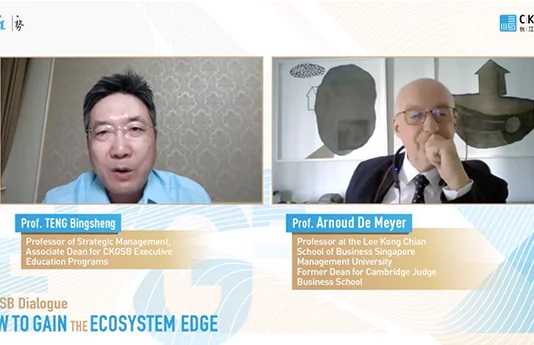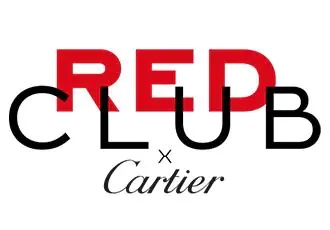Just a decade ago, Jiefangbei Pedestrian Street in downtown Chongqing was a bustling hub of cheap goods and low-end domestic brands. To see a woman stroll down the street toting a Louis Vuitton bag wouldn’t have been unbelievable: everyone would have just assumed it was an inexpensive knock-off. Those days are now long gone.
Rising labor costs have driven manufacturers from Shanghai and Guangzhou to the interior, and the economy of this one-time backwater has boomed. The street now boasts of four malls, all within a stone’s throw of each other, and Louis Vuitton has arrived, in the flesh. Housed in a mall named Maison Mode, LV’s 1,500 square meter store sells RMB 6,100 Speedy 30 bags like hotcakes. And they’re not alone. Across the flag-stoned pedestrian street there’s the unmistakable gold-lettered Gucci sign, a glistening beacon calling out to Chongqing’s conspicuous consumers. Nearby, visible through the plate glass windows of the neighboring Times Square Mall, there’s an Armani outlet.
All three stores have opened in the past two years and are signs of intensified interest in lower-tier cities like Chongqing among luxury brands in China. Louis Vuitton’s store opening in Chongqing came right after a store just two hours down the road in Sichuan’s provincial capital, Chengdu.
Say goodbye to Shanghai’s Bund, luxury ware marketers, the future of opulence is right here: in China’s inland cities.
Luxury Leaders
First-quarter sales at the French-based LVMH Moët Hennessy group (which owns Louis Vuitton), jumped 25%, a rise attributed by the group to sales inChina. Other winners out of China’s luxury impulses include Italy’s Prada SpA, whose first-quarter profit more than doubled, in part thanks to strong sales of company favorites like the perforated leather handbags which retail in Chinese boutiques for RMB 25,000.
Strong results published by leading firms will be encouraging for luxury brands depending on growth inChinato make up for weaker Eurozone sales. But brands are finding they have to move deeper into China’s interior to keep driving sales growth. Smaller cities like Yiwu, Shijiazhuang and Ordos are driving the future growth of luxury goods sales in China, explains Zhou Ting, director of the Fortune Character China Institute (FCCI), a consultancy that researches the lifestyle of China’s rich. “The global luxury market is dependent on China’s market, but China’s market is dependent on its second and third-tier cities,” says Zhou.
According to FCCI research, luxury brand sales in tier-two and three cities have now surpassed sales in tier-one municipalities. “Brands now see tier-one cities as a platform for brand promotion, but the main sales action is in smaller cities,” says Zhou. She points to high-end Italian clothing brand Kiton: its highest sales are in Hangzhou while Louis Vuitton’s highest revenue store is in far-westerly Urumqi. The less-than-glamorous cities of Taiyuan, Erdos andZhengzhourank in the top five city markets for car maker Bentley.
China is on pace to top Japan as the world’s largest market for luxury goods, according to McKinsey & Co., which estimates sales will surge 18% annually to hit $27 billion by 2015. That’s a fifth of the worldwide total and up from just $10 billion in 2009. Who wins the biggest market share may be decided by who plays the second and third-tiers.
According to the GroupM Knowledge Hurun Wealth Report 2012, there are over a million Chinese people with personal assets over RMB 10 million, only a third of whom live in Beijing, Shanghai and Guangzhou. Success for luxury brands may depend on how well brands can cater to the wealthy outside the top-tier cities.
Taking Back Control
Brands are learning to adapt their business models inChinato penetrate regional markets. That means building a larger presence and taking direct control. “Global brands are buying back direct control over their businesses from Chinese local business partners,” says Sun Baohong, Dean’s Distinguished Chair Professor of Marketing, CKGSB. “For luxury brands before, when they expanded to second and third-tier cities they used local businesses to manage [their supply chains and …] and they could quickly expand into those markets. Before their strategy was to use established channels to do the branding, now they’re in control of their operations.”
While many companies in the past have left management in China to an Asia-Pacific regional office, some have begun to open regional offices across China to drive sales. “With the tier-two and three markets developing fast, these brands will increase their regional management,” says Zhou. She points to Bentley, which has divided its China operations into North and South management zones.
Movin’ on Up
Other luxury market watchers point to a transition in consumption patterns with wealthy in first-tier cities increasingly making their purchases overseas, while lower tier consumers grow increasingly demanding and savvy. Zhang Kaifu, assistant Professor of Marketing, CKGSB, identifies what he sees as three types of Chinese luxury consumers. Top of the pecking order are the first-tier city consumers who increasingly buy abroad, followed by purchasers of products sold in China through official channels, increasingly in second- and third-tier cities. A third type of buyer purchases counterfeit items.
“The counterfeits market used to be huge… and remains a big threat,” says Zhang. “But now the consumers in second-tier cities are shifting from buying counterfeits to buying the real thing… I think they are all advancing one tier above what they used to purchase.” In June this year, Hermes CEO Patrick Thomas told Women’s Wear Daily that as much as 80% of all Hermes products bought online in the country were fakes.
Regional Differences
Luxury brands will have to tailor marketing campaigns to individual cities. Different media markets mean consumers in lower-tier cities are less familiar with luxury brands, says Zhou. “Glossy fashion magazines loaded with carefully targeted adverts are a staple on the newsstands of Beijing and Shanghai but remain highly focused on large cities. Smaller cities are more served by state-run local newspapers,” remarks Zhou, who thinks luxury brands will have to spend a lot more time researching regional markets. “They have to proactively establish sales terminals, and work to increase consumer loyalty,” he adds.
The roll out of high-end malls to regional Chinese cities is another growth driver for luxury brands. Sun explains that luxury brands are opening stores in the second- and third-tier cities and not only because of demand. “The infrastructure is now there too,” says Sun, “They want high-end malls and that is paving the way for luxury brands to be in those cities.”
There are, however, clouds on the horizon. A slowdown in China’ s economy was blamed by Hong Kong retailers for dragging the city’s retail-sales growth to the weakest pace since 2009 as shoppers visiting from the mainland cut back on purchases of luxury goods such as jewelry and watches.
Similarly, German fashion house Hugo Boss saw growth in China sales slow down to only 1% in the second quarter 2012, according to the company’s official results. In a statement announcing its first-quarter results, the firm referred to “double-digit” growth in China, without specifying a figure. Hugo Boss’s Asia-Pacific sales as a whole grew 4% in the period, compared to 9% growth in the first quarter. Others such as German automakers Mercedes-Benz, Audi and BMW are expected to report smaller profit margins from the Chinese market in the coming months as they cut prices across the board.
It may be that the days of double-digit GDP growth rates are over, but experts still see prospects for solid sales growth in luxury goods in China. Zhang says though GDP growth slowed to 7.6% in the end of June, there is no sign that the overall upward trend will be reversed. Brands like Hugo Boss, however, will have to work harder for future gains in China, says Aaron Fischer, a Hong Kong-based analyst at investment bank CLSA. “Rivalries will intensify,” he told The Wall Street Journal.
Image courtesy: Flickr user SimonQ錫濛譙’s photostream.




















